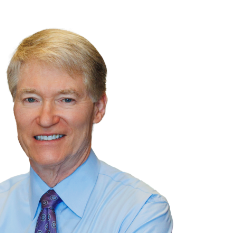 While gynecomastia does not typically cause physical discomfort or medical concerns, most men with enlarged breast tissue would prefer it gone. Gynecomastia is a common condition affecting over half of boys during puberty and up to 30% of adult men.
While gynecomastia does not typically cause physical discomfort or medical concerns, most men with enlarged breast tissue would prefer it gone. Gynecomastia is a common condition affecting over half of boys during puberty and up to 30% of adult men.
Dr. George Sanders in Los Angeles, CA, offers patients gynecomastia surgery to reduce enlarged tissue in one or both breasts. With over 4 decades of experience performing thousands of surgeries, Dr. Sanders offers compassion and care as he restores men’s chest contours.
What Is Gynecomastia?
Gynecomastia is a condition in which male breast tissue grows larger than average. The increase in breast tissue is typically due to an imbalance of hormones — namely, estrogen and testosterone.
Men can experience gynecomastia in one or both breasts, though it generally affects both.
What Causes Gynecomastia?
Typically, gynecomastia results from a decrease in testosterone compared to the hormone estrogen in the man’s body. There are several reasons the hormonal imbalance can occur.
Normal Hormonal Changes
Both men and women have the hormones testosterone and estrogen. However, men have more testosterone in their bodies, and women have more estrogen. While testosterone controls muscle mass and body hair, as well as other male traits, estrogen controls female traits like breast development.
Developing gynecomastia is common during times when male hormones are in flux. For example, male infants often have enlarged breasts as they are still experiencing the effects of their mother’s estrogen. Infant gynecomastia typically resolves within the first two to three weeks of a child’s life.
Gynecomastia is also common during puberty, resolving within six months to two years. In addition, men between 50 and 80 may experience gynecomastia due to a drop in testosterone that comes with age.
Medications
Many medications can result in gynecomastia, including:
- Steroids to treat hormone deficiencies
- Anti-androgens for an enlarged prostate
- Anti-anxiety medications
- ADHD medications
- Chemotherapy
- HIV/AIDS medications
- Certain heart medications
- Some antibiotics
- Tricyclic antidepressants
Many of these drugs increase estrogen production or have estrogen-like properties that can trigger breast tissue growth. In addition to these prescription medications, recreational drugs such as marijuana, heroin, and methadone are also linked to the condition.
Health Conditions
While gynecomastia is not a health concern, it is sometimes a symptom of the following underlying health conditions:
- Hypogonadism
- Hyperthyroidism
- Tumors
- Kidney failure
- Liver failure
- Malnutrition
- Aging
If you have noticed swelling around your chest or an increase in breast tissue, schedule an appointment with your primary care physician to rule out any medical conditions that could be causing gynecomastia.
Treating Gynecomastia
The most effective treatment for gynecomastia targets the underlying cause of the condition. Treatments often begin with monitoring the breast tissue to determine whether the enlargement will correct itself and reviewing any medications and health concerns known to trigger gynecomastia.
However, there are several treatment options if you want to reduce or eliminate gynecomastia proactively.
Lifestyle Changes
While men of all sizes can experience gynecomastia, overweight men have more fat throughout their bodies, including in their chests. Obesity and testosterone are closely linked, with higher body fat levels contributing to lower testosterone levels. Excess fat of the chest also causes increased levels of estrogen in the breast tissue that may result in breast growth.
Lifestyle changes that can improve hormone levels include:
- Reducing alcohol consumption
- Managing stress levels
- Improving the quantity and quality of your sleep
- Exercising regularly
- Eating a balanced diet
- Strength training
Eating healthy foods and exercising can help regulate your hormone levels and naturally reduce the severity of gynecomastia.
Medications and Hormone Treatments
Medications for gynecomastia often focus on treating the underlying condition causing the tissue enlargement. For example, testosterone therapy can restore balance to your hormone levels and naturally reduce gynecomastia. Treating an underlying condition like hyperthyroidism can also improve symptoms.
In some cases, your physician may switch out a medication suspected of causing the condition or lower your dose to determine whether a specific drug has led to breast enlargement.
Some physicians prescribe off-label treatments, like the breast cancer drugs raloxifene or tamoxifen, to block the effects of estrogen on the body.
Liposuction
A traditional liposuction procedure is effective when gynecomastia results from excess fatty tissue.
If you choose liposuction for gynecomastia, you will need local anesthesia with sedation or general anesthesia. Your surgeon makes tiny incisions on each side of the chest and inserts a cannula (a thin tube) through the incisions.
The cannula breaks up the fat and removes it by vacuum suction, creating a more sculpted chest contour.
Excision
Surgical tissue excision may be the best option to resculpt your chest if you have true gynecomastia, meaning excess of breast tissue. This breast tissue excision is done along with liposuction to accomplish a reduction of both the fat and breast components of breast enlargement.
Most excisions require general anesthesia. During the procedure, your surgeon creates an incision around the areola or in the chest’s natural creases and improves the chest’s contours by removing excess skin and tissue.
Liposuction and Excision
When both glandular and fatty tissue have contributed to gynecomastia, a combined liposuction and excision procedure can deliver optimal results, even in severe cases.
Look and Feel Your Best with Gynecomastia Surgery
If gynecomastia surgery is the best way to restore your chest to a flatter, more sculpted appearance, the next step is choosing the right surgeon. Dr. Sanders is one of Los Angeles’s most revered and accomplished plastic surgeons, performing thousands of procedures to help patients accomplish their aesthetic goals.
Learn about gynecomastia surgery with Dr. Sanders, and take the next step to renew your confidence.





